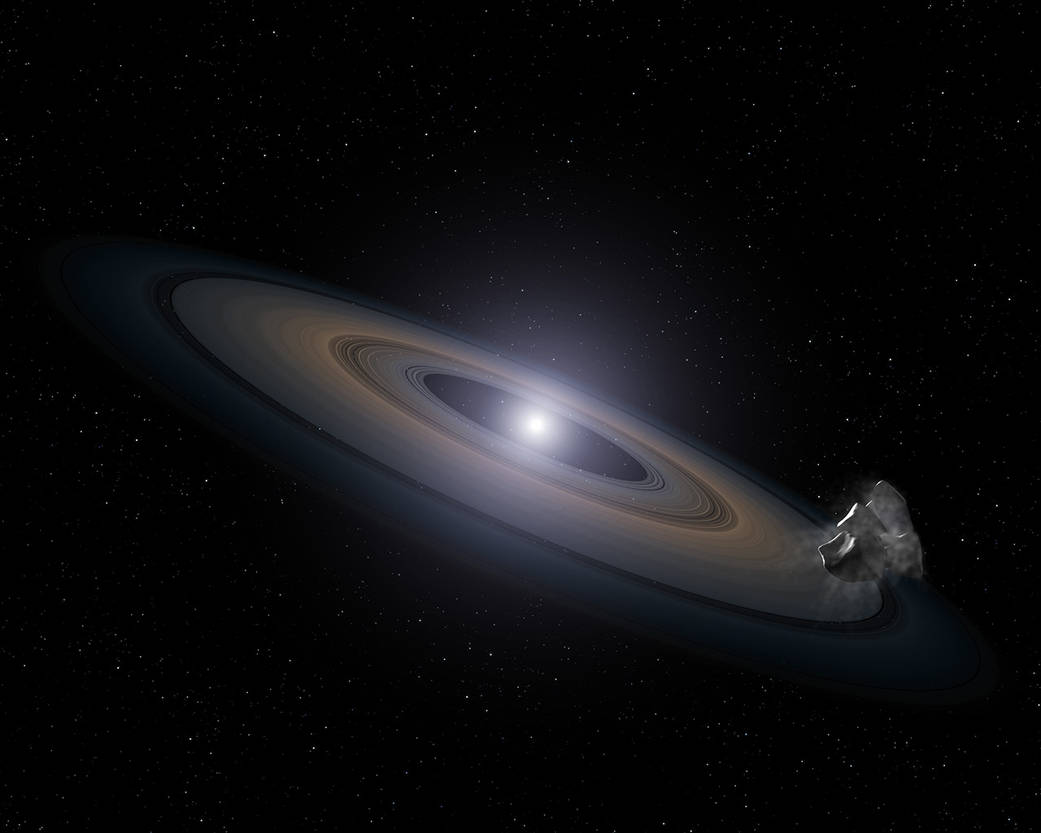Create a free profile to get unlimited access to exclusive videos, sweepstakes, and more!
Zombie stars can switch themselves on and off like black holes
Astronomers have spotted a white dwarf star that is “switching” on and off, brightening and dimming.

White dwarfs are undead stars — and like zombies, they still have an appetite, but for something other than brains.
Even dead stars shine. A white dwarf is just an exposed stellar core, the remnant of a star like our Sun, which is not massive enough to collapse into a black hole after its last breaths, but it can still accrete material and eat like one.
Astronomers have spotted a white dwarf star in the binary system TW Pictoris, which is switching on and off. It brightens as it feeds and accretes material, then dims when something gets in the way of its food supply, eerily behaving like a black hole by accreting matter that it slowly devours. Some white dwarfs are in binary systems like TW Pictoris. What is so unusual about this system is that the white dwarf, which feeds off its smaller companion, flashes on and off.
Black holes become brighter as they feed and go dark if the star stuff that powers them runs out. Apparently, so can white dwarfs. Researcher Simone Scaringi and his team, who recently published a study in Nature Astronomy, found that out through data from NASA’s TESS planet hunter (which has obviously discovered more than exoplanets). It will keep an eye on anything it is told to watch
“TESS continuously monitors targets and records brightness variations every 2 minutes,” he told SYFY WIRE. “It monitored TW Pictoris for a year, which was invaluable in seeing the system’s white dwarf turn ‘on’ and ‘off’ several times during that period.”
Because Scaringi and his team gave TESS directions to observe a number of white dwarfs, it caught the unusual behavior of the white dwarf in TW Pictoris. Though most targets are only watched for a month, following TW Pictoris for an entire year gave TESS and the researchers the opportunity to watch the star switch itself on and off several times. They think its magnetic field might be influencing this by spinning so fast that it almost blocks the star’s access to its accretion disc. The amount of fuel it gorges from its donor star also has an effect.
When a white dwarf has already been accreting dust and gas, hoarding them en masse for long periods of time, it gets brighter, especially as the accretion disc falls in closer to the dead star’s surface. All that accreted material also gives the white dwarf angular momentum. Instead of forward or backward momentum, angular momentum is the momentum of an object around an axis. This will push the white dwarf to spin faster and faster. However, it can also slow down if it cannot accrete as much material for some reason.
Momentum loss can happen if the white dwarf finds itself running out of food or if its magnetic field strengthens; sometimes both happen at once. Enter what is known as magnetic gating.
“The spinning magnetospheric barrier of the white dwarf prevents leftover disc material from accreting smoothly,” Scaringi said. “It regulates the amount that lands onto the white dwarf in fits and starts, like a centrifugal barrier that does not allow material through unless some force can push enough to overcome the barrier.”
It usually takes months for a white dwarf to consume nearly all the material in an accretion disc. Because it can take months for that to happen, the sudden dimming of the TW Pictoris system in only half an hour took Scaringi and his team by surprise. It is highly unlikely that the disc was eaten so quickly. The researchers think that the magnetic field of the system’s white dwarf gets reconfigured in a way that is still unknown. But however it occurs, it pushes the inner part of the disc out so food is further away from the ravenous zombie star. Away from its fuel, it dims.
TW Pictoris could help us further understand what goes on with other accreting objects, s such as neutron stars and, of course, black holes. Neutron stars can go from blazing to almost vanishing in the darkness of space within seconds.
“What actually causes this to happen in both types of systems is still not clear,” said Scaringi. “Whatever the mechanism is, may be the same in both.”

























